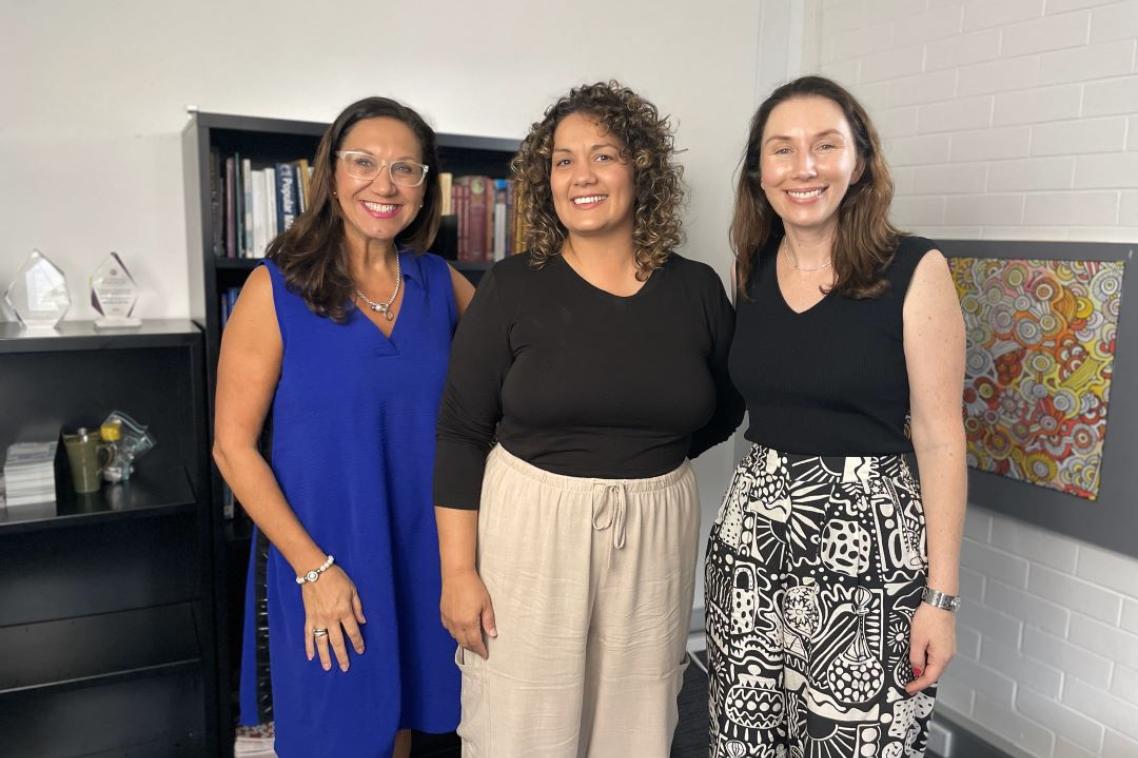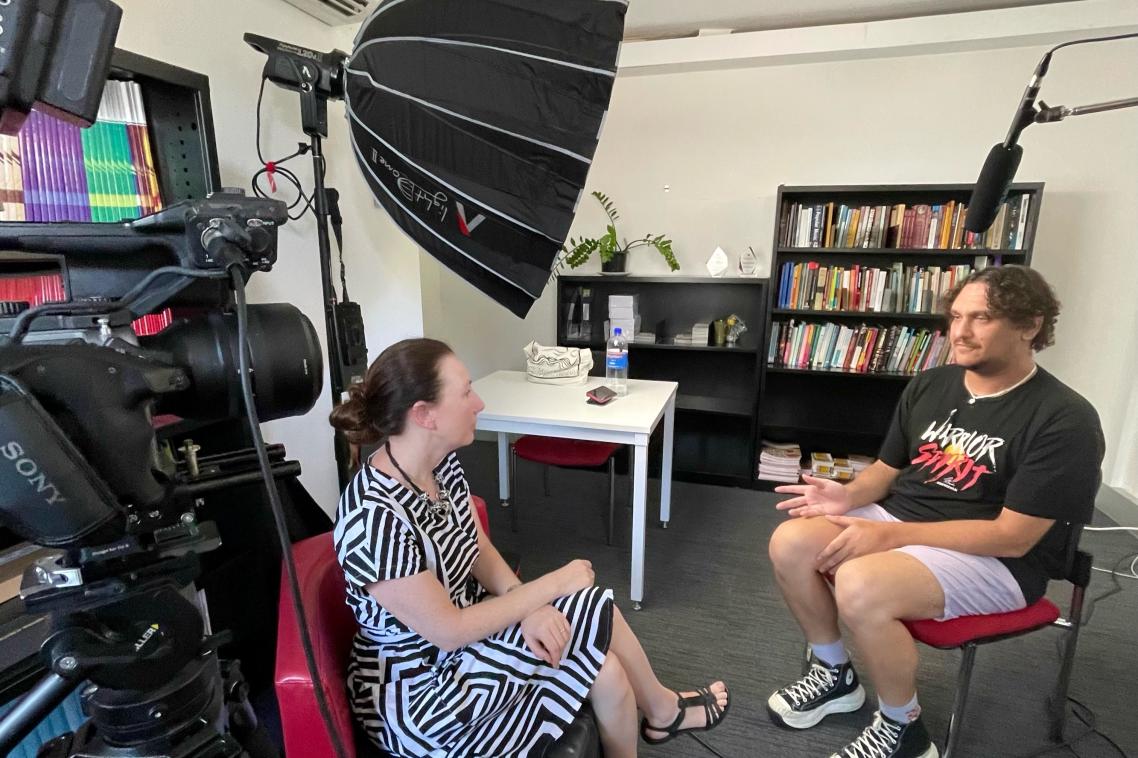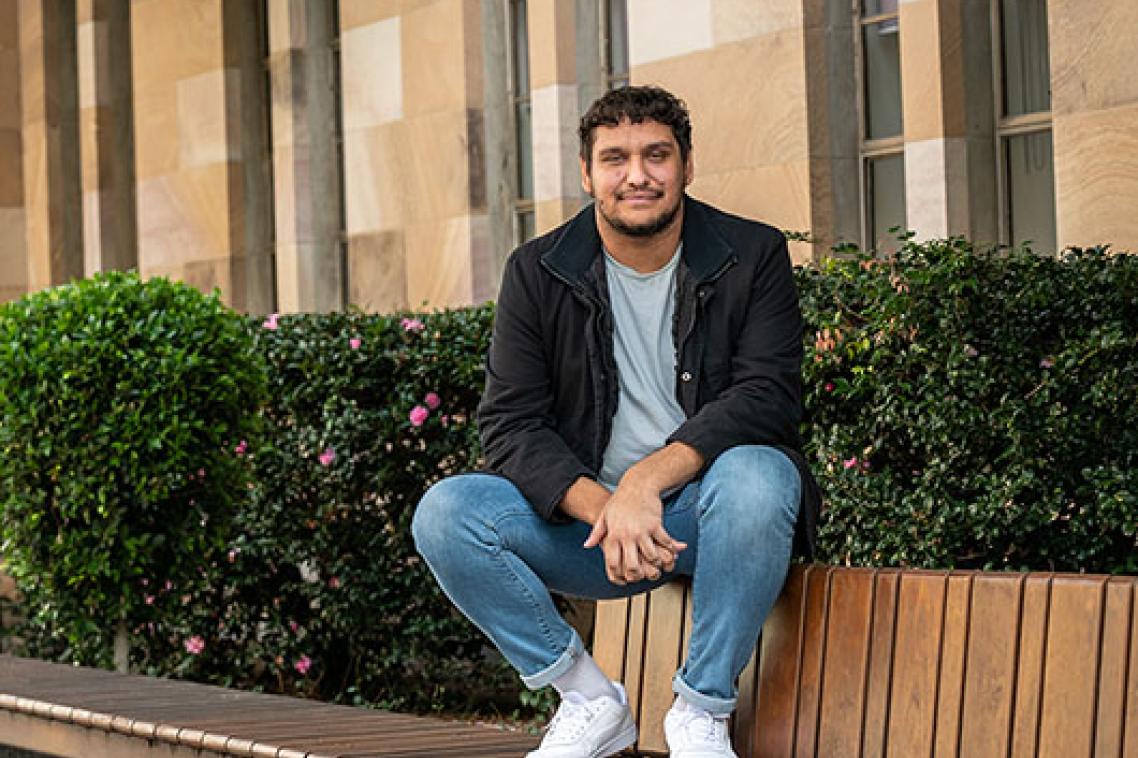Preserving language through story and song

Left to right: Professor Anita Heiss, Deline Briscoe, and Associate Professor Katelyn Barney
(Photo credit: UQ )
Key points
- University of Queensland researchers have launched a digital project that explores new ways to prevent further language loss
- The project was a collaboration between researchers from ATSIS and School of Music
- Five Indigenous and Torres Strait Islander people were interviewed about their relationship between music and language learning
Katelyn Barney, who is an Associate Professor in UQ’s Aboriginal and Torres Strait Islander Studies Unit (ATSIS) and affiliated with UQ’s School of Music, collaborated with Professor Anita Heiss from ATSIS and Indigenous artist Deline Briscoe to create a suite of videos exploring the connection between music and language.
“Australia has hundreds of distinct Indigenous languages, but due to colonisation and subsequent assimilation policies, there’s an ongoing crisis of Indigenous language endangerment,” Associate Professor Barney said.
“Music is often used when teaching language to children, however there are limited resources available to those who want to learn or connect with their language later in life.
“We wanted to fill that gap and create a resource in the digital space where it’s easily accessible.”
The team conducted interviews with 5 individual Aboriginal and Torres Strait Islander people with lived experience using music to learn or preserve their traditional language.
“We found that in many cases, the artist or performer felt that sense of responsibility to be able to continue language through music, but that can be challenging to do due to history and cultural protocols,” Dr Barney said.
“Some talked about language loss or how they heard segments of language while they were growing up but decided as an adult that learning the language was really important.”
Among the case studies was UQ Bachelor of Arts alum and musician Jamaine Wilesmith, a Biripi Worimi person from Taree, New South Wales who had been trying to learn his language, Kattang, for the past 6 years.
“Growing up, there wasn’t much language spoken around me,” Mr Wilesmith said.
“Looking back, I wish I had someone to teach me simple phrases through spoken word or music, as I had nothing except the very little words that my family knew.”
Mr Wilesmith said as a musician, he found incorporating Kattang into his songs has helped him preserve and familiarise himself with the language.
“When I use the language in my songs or writing, it gives me a sense of pride, nostalgia and misery,” Mr Wilesmith said.
“I love that when I sing or speak in language I've done right by my people and proven to our ancestors that we are strong enough and are still here, even though they're not.”

Associate Professor Barney and Jamaine Wilesmith on set of the project.
Mr Wilesmith said participating in the interviews was a cathartic experience and allowed him to reflect on his journey so far.
“I enjoyed yarning with Katelyn. She has always made space for me and my unique emotive expressions,” he said.
Professor Anita Heiss said the project was an important step in preserving language and creating resources to educate both Indigenous and non-Indigenous people.
"The maintenance of language requires it be recorded and shared in as many formats as possible,” Professor Heiss said.
“This project is just one of the important contributions to the space.
“In the United Nations Decade on International Indigenous Languages (2022-2032), it’s timely to have our project get off the ground, and it is a significant contribution to the goals of language preservation at an international level.”
Professor Heiss said she and Dr Barney were working on developing the project into other education resources.
“I will be recommending the resources created as part of this project as foundation information for educators but also for use in the classroom,” Professor Heiss said.
“The national curriculum requires looking at Aboriginal and Torres Strait Islander histories and cultures, and music is an efficient and enjoyable way to ease students into conversations about a range of topics and themes related to First Nations people and their history.”
Collaboration and acknowledgements
The pilot project was funded by the Centre for Digital Cultures and Societies.Topics
Related articles
Second chance at success for Torres Strait Islander Medicine graduate

Indigenous music student launches debut single through UQ
Media contact
UQ Communications
communications@uq.edu.au
+61 429 056 139

